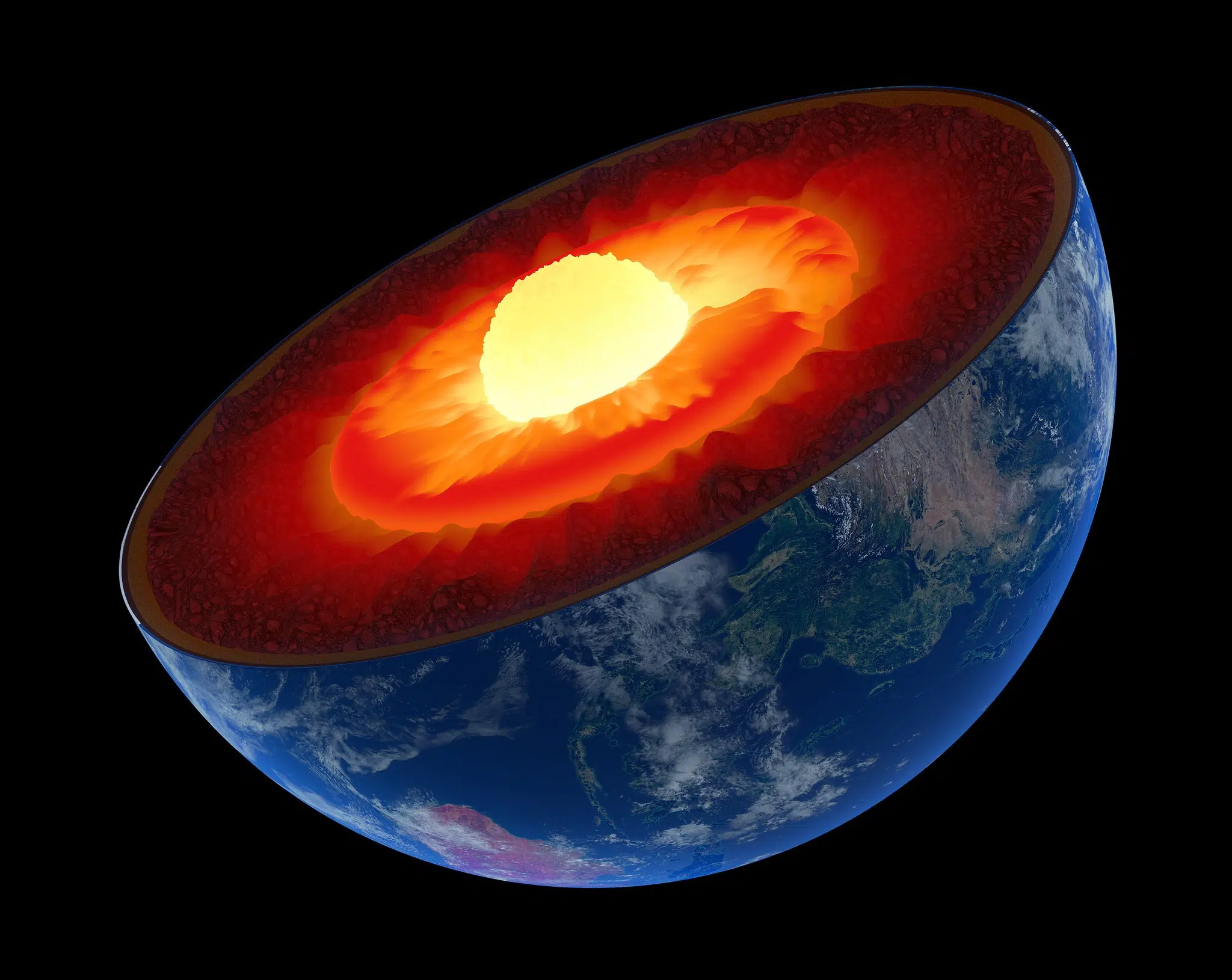
According to the findings of a recent study, the core of the Earth may no longer be spinning at all or may possibly be spinning backward.
A solid metal core, roughly seventy percent of the size of the moon, surrounds a liquid metal core in the center of our planet. For the most part, it is believed that, as viewed from the North Pole, the core of the Earth spins counter-clockwise, much like the rest of the world.
However, experts from Peking University in Beijing, China have analyzed seismic wave data over the previous sixty years and come to the conclusion that the core’s rotation halted in 2009 and then began spinning in the opposite direction.
“We think that the core is, relative to the surface of the Earth, rotating in one direction and then the other, like a swing,” Xiaodong Song and Yi Yang, the study authors, reported. They also noted that this swing takes around seventy years to make a full cycle—in one direction and then the other.
The researchers believe that the previous rotation change happened in the early 1970s and that the following one will occur in the mid-2040s.
Uncertain findings
The rotation of the Earth’s solid inner core may have recently paused and could be reversing, according to a study published in @NatureGeosci. These findings indicate that changes in the rotation could occur on a decadal scale. https://t.co/ivnfVwmxFu pic.twitter.com/pHEFXXh3V6
— Nature Portfolio (@NaturePortfolio) January 24, 2023
Because it is so challenging to collect data about the Earth’s core, there is still a lot of speculation concerning its core.
At a depth of around 2,890 kilometers, the Earth’s mantle and the supposedly liquid outer core meet at what is known as the Gutenberg discontinuity, which marks the dividing line between the two.
Extreme pressure causes the atoms of the metal to pack together, leading scientists to believe that the inner core, which begins at about five thousand kilometers below the surface, is composed of solid iron and nickel.
The examination of seismic waves has shown that it is situated beneath the Earth’s liquid outer core. Until very recently, it rotated in the same direction as the rest of the planet.
Xiaodong Song and Yi Yang investigated these seismic waves and discovered that they are related to a “gradual turning-back of the inner core as part of an approximately seven-decade oscillation.” Their study appears in Nature Geoscience.
How often does the rotation of the Earth’s inner core change?
Seismic data from two nuclear explosions in the late 1960s and early 1970s imply that the inner core might actually oscillate considerably more rapidly, changing direction around every six years, as found in research released by Vidale in 2022.
While new research published this week in Nature Geoscience suggests that the inner core has a seventy-year cycle, another geophysicist, Hrvoje Tkalcic of the Australian National University, disagrees.
According to the report published by academics at Peking University, this oscillation “coincides with changes in several other geophysical observations,” including the length of days and shifts in the Earth’s magnetic field.
As a result of gravitational coupling and the interchange of angular momentum from the core and mantle to the surface, “these observations provide evidence for dynamic interactions between the layers of Earth, from the deepest interior to the surface,” they write.
“We hope that our research motivates researchers to design and test models treating the Earth as an integrated dynamic system,” they conclude.
See all the latest news from Greece and the world at Greekreporter.com. Contact our newsroom to report an update or send your story, photos and videos. Follow GR on Google News and subscribe here to our daily email!



